As technology continues to advance and permeate every aspect of business operations, understanding and managing IT costs has become increasingly important. Companies need to be aware of their monthly IT expenses to make data-driven decisions, allocate resources appropriately, and plan for future expansion.
In this blog post, we aim to help you navigate the process of calculating your monthly IT costs by exploring various contributing factors, such as hardware, software, networking, security, and more. By gaining a deeper insight into these expenses, you will be better equipped to optimize your IT budget and ensure the long-term success of your organization.
Table of Contents
Factors Affecting Monthly IT Costs
Calculating Hardware and Infrastructure Costs
Estimating Software and License Costs
Assessing Networking and Connectivity Expenses
Evaluating Security and Data Protection Costs
Analyzing Cloud Services and Storage Costs
Accounting for IT Support and Maintenance Costs
Considering Staff Training and Development Expenses
Factoring in Depreciation and Replacement Costs
Wrap Up
Factors Affecting Monthly IT Costs
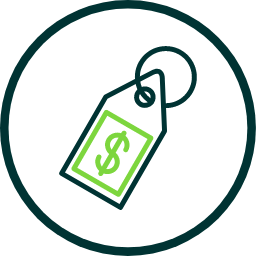
Hardware and Infrastructure
This category encompasses the physical components of your IT system, including servers, workstations, laptops, peripherals, and networking equipment. These expenses can be incurred as up-front costs or through lease agreements, depending on your organization's preference.
Software and Licenses
Software costs include the acquisition and renewal of licenses for operating systems, productivity tools, specialized applications, and other software solutions your organization relies on. Some software providers offer subscription-based models, while others require a one-time purchase.
Networking and Connectivity
This factor covers expenses related to establishing and maintaining a stable internet connection, such as broadband subscriptions, Wi-Fi equipment, and VPN solutions. In addition, this category includes costs for maintaining and upgrading network infrastructure to ensure optimal performance.
Security and Data Protection
Safeguarding your organization's data and IT infrastructure is crucial. Expenses in this category include firewall and antivirus software, data encryption tools, and security monitoring solutions. It also covers the cost of compliance with industry-specific regulations and standards.
Cloud Services and Storage
As businesses increasingly shift to cloud-based solutions, the cost of cloud services and storage becomes a significant part of the monthly IT budget. This can include fees for Infrastructure-as-a-Service (IaaS), Platform-as-a-Service (PaaS), or Software-as-a-Service (SaaS) offerings.
IT Support and Maintenance
To keep your IT infrastructure running smoothly, you'll need to allocate funds for regular support and maintenance. This can involve hiring in-house IT staff or outsourcing to a managed IT service provider. Costs may also include software updates, hardware repairs, and system troubleshooting.
Staff Training and Development
Investing in employee training and development ensures your team can effectively use and manage your IT resources. This can include costs for onboarding, ongoing education, certification programs, and seminars.
Depreciation and Replacement Costs
Finally, it's essential to account for the depreciation and eventual replacement of IT assets. This involves estimating the useful life of your hardware and software components and setting aside funds for their replacement or upgrade when needed.
Calculating Hardware and Infrastructure Costs
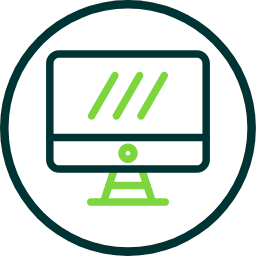
Computers, Servers, and Peripherals
To determine the cost of computers, servers, and peripherals, create a detailed inventory of all hardware components required for your organization's operations. This can include desktop computers, laptops, servers, monitors, printers, scanners, and other peripherals. Consider the purchase price or leasing fees, as well as any warranties or maintenance agreements. Divide the total cost by the estimated useful life of each item to arrive at a monthly expense.
Network Equipment and Devices
Network equipment and devices, such as routers, switches, and Wi-Fi access points, are essential for maintaining a robust and secure IT infrastructure. To calculate the costs, identify the necessary equipment and their respective prices. Factor in any ongoing costs, such as software licenses or subscriptions for advanced features or management tools. As with other hardware components, divide the total cost by the estimated useful life to determine the monthly expense.
Office Equipment and Supplies
Office equipment and supplies are often overlooked when calculating IT costs but can have a significant impact on your organization's overall expenses. This category includes items like printer paper, ink and toner cartridges, and other consumables. To calculate these costs, estimate the monthly usage of each item and multiply it by the unit price. Don't forget to consider the costs of maintaining and replacing office equipment, such as printers and scanners, as part of your calculation.
Estimating Software and License Costs
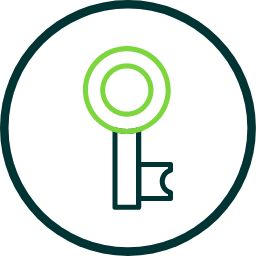
Operating Systems and Productivity Tools
Operating systems and productivity tools, such as Microsoft Windows, macOS, Microsoft Office, and Google Workspace, are crucial for day-to-day business operations. To estimate these costs, identify the necessary software and their respective prices, considering whether you'll be purchasing one-time licenses or opting for subscription-based services. Make sure to factor in the number of users and devices that will need access to these tools.
Industry-specific Software
Many industries have specialized software that caters to their unique needs, such as accounting, project management, or graphic design applications. To calculate the costs of industry-specific software, research the most relevant tools for your organization and determine their pricing structure. Include any necessary licenses, subscriptions, or maintenance fees in your calculations.
Subscription-based Services
Many software applications now offer subscription-based pricing, which can simplify budgeting and provide access to ongoing updates and support. Examples include software as a service (SaaS) platforms, like customer relationship management (CRM) systems or collaboration tools. To estimate these costs, identify the services your organization requires, their subscription fees, and the number of users who will need access. Be sure to factor in any potential discounts for annual billing or volume pricing.
License Renewals and Upgrades
D. License Renewals and Upgrades Software license renewals and upgrades can significantly impact your IT budget. To account for these costs, review the terms and conditions of your existing software licenses and note any upcoming renewal or upgrade deadlines. Estimate the cost of renewals and upgrades based on the vendor's pricing structure and your organization's requirements. Remember to include these expenses in your monthly IT cost calculation.
Assessing Networking and Connectivity Expenses
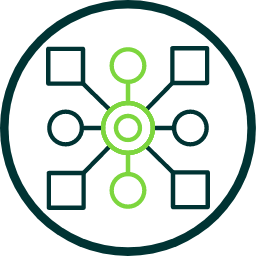
Internet Service Providers and Plans
A. Internet Service Providers and Plans A reliable and fast internet connection is essential for modern businesses. To calculate the costs associated with internet service providers (ISPs) and plans, research the available options in your area and their respective pricing structures. Consider factors such as bandwidth, speed, and data allowances when selecting a plan, and take into account any installation or equipment rental fees.
Telecommunication Services
Telecommunication services, such as landlines, mobile phones, and VoIP solutions, are critical for maintaining communication within your organization and with clients. To assess these expenses, determine the number of users, devices, and features required, and compare the pricing plans offered by various providers. Be sure to include any additional costs, such as roaming fees or international calling rates, when applicable.
VPN and Remote Access Solutions
With the rise of remote work, VPNs and other remote access solutions have become increasingly important for ensuring secure access to company resources. To estimate the costs of VPN and remote access solutions, research the available options, considering factors like security, ease of use, and the number of users who will require access. Factor in any setup, licensing, or subscription fees, and add these expenses to your monthly IT cost calculations.
Evaluating Security and Data Protection Costs
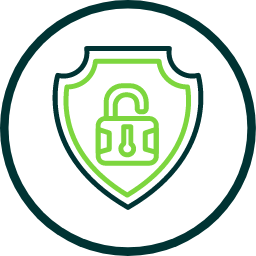
Antivirus and Malware Protection
Protecting your organization's data and systems from viruses and malware is crucial. To calculate the costs of antivirus and malware protection, consider the number of devices requiring coverage and the subscription fees for various software options. Keep in mind that some solutions offer tiered pricing based on the features and level of protection provided.
Firewalls and Intrusion Prevention Systems
Firewalls and intrusion prevention systems help safeguard your network from unauthorized access and potential attacks. To evaluate these costs, research the hardware or software solutions best suited for your organization's needs and size. Factor in any installation, setup, and maintenance costs, as well as ongoing subscription or licensing fees, if applicable.
Data Backup and Recovery Solutions
Data backup and recovery solutions are essential for minimizing the impact of data loss or system failure. To assess these costs, determine the amount of data storage required and the frequency of backups. Research various backup solutions, such as cloud-based or on-premises options, and compare their pricing structures. Be sure to include any additional costs for setup, maintenance, and recovery services.
Security Audits and Assessments
Regular security audits and assessments can help identify potential vulnerabilities and ensure that your organization's security measures are up to date. To estimate the costs of security audits and assessments, research the available options, such as hiring external consultants or utilizing in-house staff. Factor in the frequency of audits, the scope of the assessments, and any additional costs for implementing recommended security improvements. Add these expenses to your overall monthly IT cost calculations.
Analyzing Cloud Services and Storage Costs
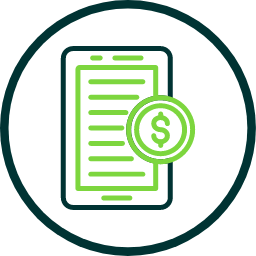
Public, Private, and Hybrid Cloud Solutions
When considering cloud services and storage costs, it's essential to evaluate the different types of cloud solutions available. Public cloud solutions involve using a shared infrastructure managed by a third-party provider, while private cloud solutions offer dedicated infrastructure for your organization. Hybrid cloud solutions combine elements of both public and private clouds. Each option has its own set of benefits and drawbacks, so it's crucial to identify which type best aligns with your organization's needs and goals.
Storage, Processing, and Bandwidth Requirements
To accurately calculate cloud services and storage costs, you need to determine your organization's storage, processing, and bandwidth requirements. Consider the amount of data your organization generates and processes, as well as the level of computing power and network capacity needed to support your operations. Keep in mind that these requirements may change over time, so it's essential to plan for potential growth and scalability.
Cloud Service Provider Fees
Once you've identified your organization's cloud needs, research various cloud service providers and their pricing structures. Many providers offer tiered pricing based on factors such as storage capacity, data transfer, and processing power. Some providers may also charge additional fees for services like data backups, disaster recovery, or technical support. To calculate your monthly cloud services and storage costs, add up the fees associated with your chosen provider and plan, factoring in any additional costs that may apply.
Accounting for IT Support and Maintenance Costs

In-house IT Staff Salaries and Benefits
If your organization employs in-house IT staff, their salaries and benefits should be factored into your monthly IT costs. This includes not only base salaries but also any bonuses, overtime, healthcare, retirement contributions, and other employee benefits. Keep in mind that the size and expertise of your IT team will greatly impact these costs.
Outsourced IT Support Services
For organizations that choose to outsource their IT support, the associated costs will vary depending on the level of service required and the provider's pricing model. These costs may be billed hourly, on a per-project basis, or as a fixed monthly fee. When estimating your monthly IT support and maintenance costs, ensure you account for any outsourced services your organization relies on.
Software and Hardware Maintenance Contracts
Software and hardware maintenance contracts are another essential aspect of IT support and maintenance costs. These contracts typically include regular updates, patches, and bug fixes to keep your systems running smoothly and securely. They may also provide access to technical support and other resources. When calculating your monthly IT costs, factor in the costs of any maintenance contracts for software and hardware your organization uses.
Incident Response and Troubleshooting
Unexpected IT issues can arise, and it's crucial to account for the costs associated with incident response and troubleshooting. These expenses may include the time spent by your IT staff or outsourced support services in identifying, diagnosing, and resolving problems, as well as any additional costs for replacement hardware or software. To estimate these costs, consider the historical frequency and severity of IT issues your organization has experienced and allocate a reasonable monthly budget to cover unforeseen incidents.
Considering Staff Training and Development Expenses
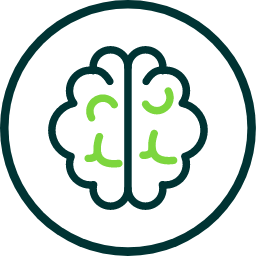
IT Certification and Training Programs
Investing in IT certification and training programs for your staff can greatly enhance their skills and expertise, ultimately benefiting your organization. These programs can range from vendor-specific certifications, such as those offered by Microsoft, Cisco, and AWS, to more general certifications like CompTIA A+ or CISSP. When calculating your monthly IT costs, remember to include the expenses related to certification and training programs for your IT team.
Workshops, Conferences, and Seminars
Attending workshops, conferences, and seminars can provide your IT staff with valuable insights, networking opportunities, and knowledge about the latest industry trends and best practices. These events often require registration fees, travel expenses, and accommodation costs. To accurately assess your monthly IT costs, factor in the expenses associated with sending your team members to relevant workshops, conferences, and seminars.
Ongoing Professional Development
Ongoing professional development is essential for keeping your IT team up-to-date with the ever-changing technology landscape. This may involve subscribing to industry publications, online courses, or memberships to professional organizations. While these costs may be smaller compared to formal training programs and conferences, they are still a crucial part of your overall IT budget. Be sure to account for the expenses related to ongoing professional development when estimating your organization's monthly IT costs.
Factoring in Depreciation and Replacement Costs
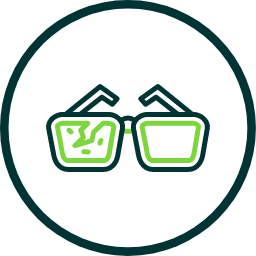
Hardware and Software Life Cycles
Understanding the life cycles of your hardware and software is essential for accurately calculating your monthly IT costs. Over time, technology becomes outdated, and equipment may suffer from wear and tear. As a result, your organization will need to replace or upgrade these assets periodically. Take into account the expected life spans of your hardware and software, which can vary depending on the type and usage, when estimating your IT costs.
Replacement Schedules and Budgeting
Establishing a replacement schedule for your hardware and software can help you better manage your IT budget and avoid unexpected expenses. By identifying the anticipated life cycles of your assets, you can allocate funds in your budget to cover the costs of necessary upgrades or replacements. Consider creating a multi-year budget plan that accounts for depreciation and replacement costs, allowing you to spread these expenses over time and better understand your organization's monthly IT costs.
Wrap Up
The Value of Accurately Calculating Monthly IT Costs
Calculating your monthly IT costs with precision is vital for your organization's financial planning and budgeting. By understanding the various factors that contribute to your IT expenses, you can make informed decisions about the resources and services you need. Furthermore, this knowledge enables you to allocate funds appropriately and ensure that your organization's IT infrastructure remains efficient and up-to-date.
Tips for Optimizing and Managing IT Expenses
To optimize and manage your IT expenses effectively, keep the following tips in mind:
- Regularly review and update your IT budget to ensure it remains accurate and reflects your organization's current needs.
- Stay informed about the latest technological advancements and industry trends to identify potential cost-saving solutions and opportunities for improvement.
- Evaluate the cost-effectiveness of your IT investments by conducting regular ROI assessments.
- Consider utilizing managed IT services or outsourcing certain tasks to reduce in-house costs and gain access to specialized expertise.
- Encourage ongoing staff training and development to enhance your team's skills and improve overall IT efficiency.
By following these tips, you can better manage your monthly IT costs and ensure your organization's technology infrastructure remains robust and reliable.
Icons by manshagraphics on freeicons.io
Share on social media